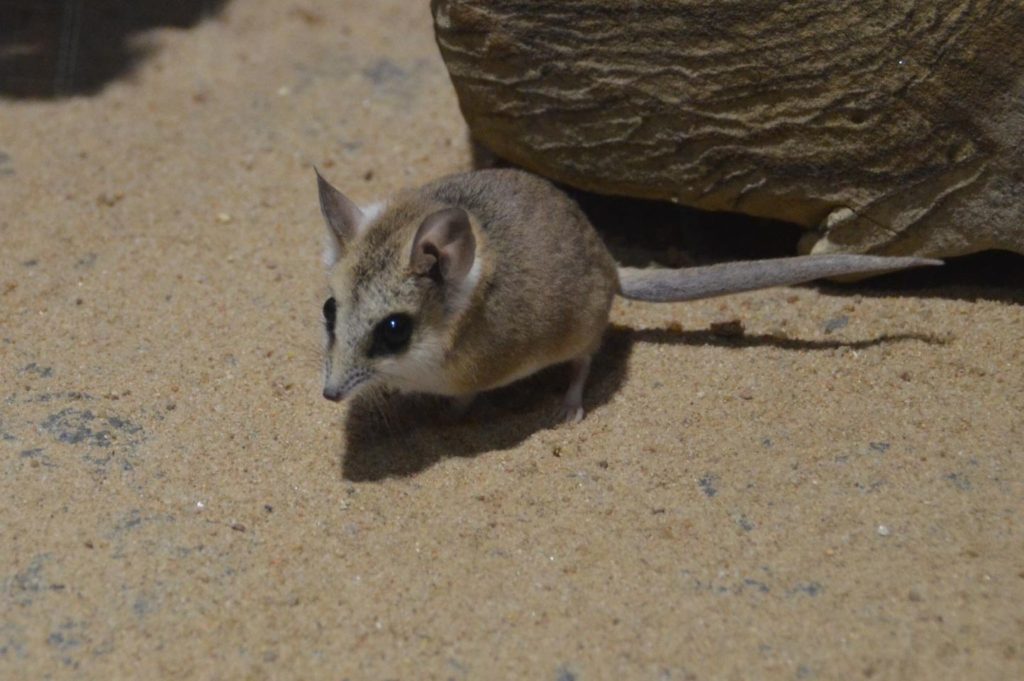The Julia Creek Dunnart (Sminthopsis douglasi) is a marsupial with a buffy brown upperside and white underside. This Dunnart has a body length of 100–135 mm with a tail of 60–105 mm to make a total length of 160–240 mm. Its weight is between 40 and 70 g. The length of the hind foot is 22–24 mm. The species has a dark brown triangle colour from above and below the eye with the point at the nose, and another dark stripe on top of the skull. A healthy dunnart has a carrot-shaped tail filled with fat stores.

Julia Creek dunnarts are typically found on 8000 km² in the Mitchel Grass downs of riparian grasslands, between Julia Creek and Richmond in Queensland, it possibly occurs in the Mitchell Plateau of Western Australia. The prickly acacia is a threat to its habitat as it kills native grasslands. Cultivation and introduced species also threaten this dasyurid’s habitat.
In 1999, McGill University (Australia) physiologist Dr Jacopo Mortola (Canada) has discovered that although as an adult this shrew-like marsupial breathes through its lungs like other mammals, when first born it is so small – only 4 mm long – that its muscles are too weak to inflate its lungs. Consequently, it absorbs oxygen directly through its skin, a process continuing until it leaves its mother’s pouch, by which time it is large enough to inflate its lungs.
According to Wikipedia/ abc















